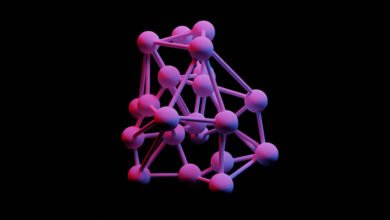
In recent years, the concept of smart factories has emerged as a revolutionary force reshaping the landscape of industrial manufacturing. With the integration of cutting-edge technologies such as the Internet of Things (IoT), Artificial Intelligence (AI), and advanced robotics, smart factories represent the pinnacle of efficiency and innovation in modern production processes. This article delves into the phenomenon of smart factories within the context of German industry in the year 2024, exploring their evolution, key components, benefits, challenges, case studies, and future trends.
Evolution of Smart Factories in German Industry
Historical Background
The roots of smart factories trace back to the industrial revolutions of the 18th and 19th centuries, marked by significant advancements in mechanization and mass production. However, the true emergence of smart factories as we know them today can be attributed to the advent of digital technologies in the late 20th and early 21st centuries.
Technological Advancements
The evolution of smart factories in German industry has been driven by continuous innovation and the relentless pursuit of efficiency. Key technological advancements that have propelled this evolution include the widespread adoption of IoT devices, the integration of AI and machine learning algorithms, and the deployment of advanced robotics and automation systems.
Key Components of Smart Factories
Internet of Things (IoT)
At the heart of smart factories lies the IoT, which enables seamless connectivity and data exchange between physical devices and digital systems. Through the deployment of sensors, actuators, and other IoT devices, manufacturers can gather real-time insights into various aspects of the production process, optimizing efficiency and enabling predictive maintenance.
Artificial Intelligence (AI) Integration
AI plays a crucial role in smart factories by enabling intelligent decision-making and automation of complex tasks. Machine learning algorithms analyze vast datasets to identify patterns, optimize production schedules, and detect anomalies, thereby enhancing overall operational efficiency and quality control.
Robotics and Automation
Robotic systems have become indispensable in smart factories, performing a wide range of tasks with precision and speed. From assembly line operations to material handling and packaging, robots streamline workflows, minimize errors, and alleviate the burden on human workers, ultimately increasing productivity and output.
Benefits of Smart Factories
Increased Efficiency
One of the primary benefits of smart factories is the significant improvement in operational efficiency. By leveraging real-time data analytics and automation technologies, manufacturers can streamline production processes, minimize downtime, and optimize resource utilization, leading to higher throughput and reduced lead times.
Enhanced Productivity
Smart factories empower workers with the tools and technologies needed to perform their tasks more effectively. Automation of repetitive and mundane tasks frees up human resources to focus on higher-value activities, fostering innovation and creativity within the workforce while driving overall productivity gains.
Improved Safety Measures
The integration of advanced technologies enhances workplace safety in smart factories. AI-powered predictive maintenance systems identify potential equipment failures before they occur, reducing the risk of accidents and ensuring a safer working environment for employees. Furthermore, collaborative robots (cobots) work alongside human workers, enhancing ergonomics and minimizing safety hazards.
Read More: 6 Strengths of the German Economy
Challenges and Limitations
Initial Investment Costs
While the benefits of smart factories are undeniable, the initial investment required for deployment can be substantial. Upgrading existing infrastructure, implementing new technologies, and training personnel entail significant upfront costs, which can pose a barrier to adoption for some manufacturers, particularly small and medium-sized enterprises (SMEs).
Workforce Adaptation
The transition to smart factories necessitates upskilling and reskilling of the workforce to effectively utilize new technologies and adapt to changing roles and responsibilities. Resistance to change and the fear of job displacement may hinder workforce adaptation, requiring proactive measures such as training programs and knowledge-sharing initiatives to bridge the skills gap.
Cybersecurity Concerns
As smart factories become increasingly interconnected and reliant on digital systems, cybersecurity emerges as a critical concern. The proliferation of IoT devices and the integration of AI introduce new vulnerabilities that malicious actors may exploit, posing risks such as data breaches, system hijacking, and sabotage. Robust cybersecurity measures and ongoing vigilance are essential to safeguard sensitive information and ensure the integrity of smart factory operations.
Case Studies: Smart Factories in German Industry
Automotive Sector
In the automotive sector, German manufacturers have been at the forefront of adopting smart factory technologies to enhance production efficiency and product quality. Companies such as BMW, Volkswagen, and Mercedes-Benz have implemented advanced robotics, AI-driven quality control systems, and IoT-enabled supply chain management solutions to optimize their manufacturing processes and maintain a competitive edge in the global market.
Manufacturing Sector
Beyond the automotive industry, smart factories have also gained traction in various manufacturing sectors across Germany, including electronics, machinery, and pharmaceuticals. Companies leverage smart technologies to achieve higher levels of customization, flexibility, and responsiveness in their production operations, catering to evolving consumer demands and market trends.
Future Outlook and Trends
Integration of 5G Technology
The integration of 5G technology is poised to revolutionize smart factory operations by enabling ultra-low latency communication, high-speed data transfer, and seamless connectivity across a myriad of devices and sensors. 5G networks will unlock new opportunities for real-time monitoring, remote control, and collaborative robotics, paving the way for more agile and responsive manufacturing ecosystems.
Sustainable Manufacturing Practices
As sustainability continues to gain prominence on the global agenda, smart factories are increasingly adopting environmentally friendly practices to minimize waste, reduce energy consumption, and mitigate their carbon footprint. From energy-efficient production processes to the utilization of recycled materials and closed-loop supply chains, manufacturers are embracing sustainability as a core pillar of their operations.
Human-Robot Collaboration
The future of smart factories lies in harmonious collaboration between humans and robots, leveraging the unique strengths of each to maximize productivity and innovation. Collaborative robots equipped with advanced sensors and AI capabilities will work alongside human workers in shared workspaces, enhancing efficiency, safety, and adaptability in manufacturing environments.
Read More: What Role Does Germany Play in Global Trade?
Conclusion
In conclusion, smart factories represent a transformative paradigm shift in the realm of industrial manufacturing, redefining traditional production models and setting new standards for efficiency, productivity, and innovation. While challenges such as initial investment costs, workforce adaptation, and cybersecurity remain pertinent, the benefits of smart factories in terms of increased efficiency, enhanced productivity, and improved safety measures outweigh the obstacles. With ongoing advancements in technology and a commitment to sustainability, smart factories are poised to drive the future of the German industry in 2024 and beyond.
FAQs
What are smart factories?
Smart factories are manufacturing facilities that leverage advanced technologies such as IoT, AI, and robotics to optimize production processes and enhance operational efficiency.
What are the key components of smart factories?
The key components of smart factories include the Internet of Things (IoT), Artificial Intelligence (AI) integration, and robotics and automation systems.
What are the benefits of smart factories?
Smart factories offer benefits such as increased efficiency, enhanced productivity, and improved safety measures in the workplace.
What challenges do smart factories face?
Smart factories face challenges such as initial investment costs, workforce adaptation, and cybersecurity concerns related to interconnected digital systems.
What is the future outlook for smart factories?
The future outlook for smart factories includes trends such as the integration of 5G technology, sustainable manufacturing practices, and human-robot collaboration to drive innovation and efficiency in manufacturing processes.










